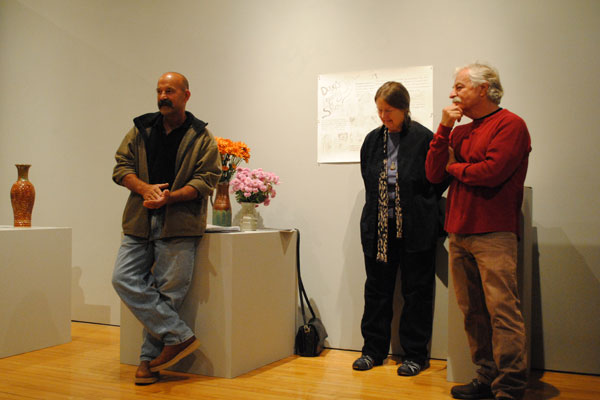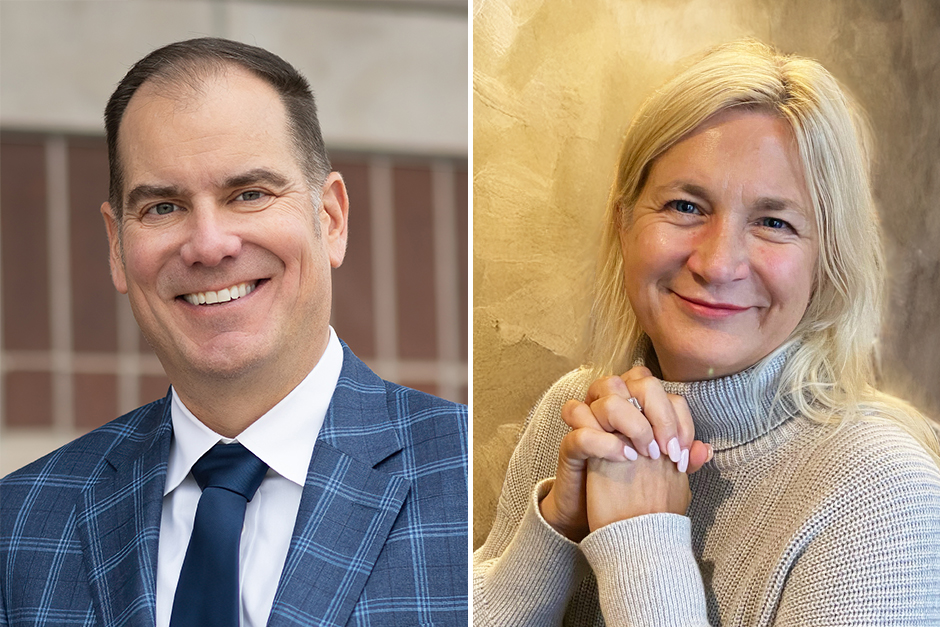Leaving behind more than one legacy
When Doug Hanson retires this spring after teaching art at Cornell for 41 years, he’ll leave behind a legacy in the form of the art he inspired hundreds of students to create. His former students celebrated that legacy at Homecoming in 2011, with dozens exhibiting their artwork for the “Doug Hanson Legacy” show.

Photo by Tiffany Monreal ’14
The show was a tribute to the influence Hanson’s teaching and art have had on generations of Cornellians.
But Hanson leaves behind another legacy, as well, one of using art to make the world a better place.
It started in 1971, Hanson’s first year at Cornell. He joined art Professor Emeritus Hugh Lifson, who was taking a class to the Anamosa State Penitentiary as part of a visitation program started by the Rev. Richard Thomas, college chaplain and professor emeritus of history. The program, probably the longest continuously running civic engagement effort at Cornell, lets students and professors share their artwork with the residents of the facility. And it’s led to major art projects, as well. For two blocks, Hanson and 16 students visited the penitentiary and created a mural with the residents. Each person made four tiles, with each tile representing one of the seasons. At the end of the project, the tiles were divided, and two murals made, one for the penitentiary and one in the main level of The Commons, just outside the Ratt.
In the ’80s Hanson helped form Potters for Peace following a visit in 1986 to the Associate Colleges of the Midwest’s program in Central America.
After he returned, Hanson spoke about the pottery and the ongoing revolution in Nicaragua at an alumna’s ceramics studio, and was contacted by someone interested in helping those potters start businesses.
For 10 years, the nongovernmental organization helped build kilns around the country and in return, potters gave them a percentage of the items they made. Now Hanson sells their pottery at different U.S. venues. A third of the proceeds from those sales goes to the potters, a third for shipping to the United States, and a third goes to Potters for Peace to help build more kilns and make other improvements.
In 1998, though, things changed. Hurricane Mitch devastated the country, killing more than 10,000. There was a desperate need for clean water, so the group helped design and produce ceramic water filters. The simple porous clay container with a coating of colloidal silver removes 99.99 percent of turbidity, parasites and bacteria. Each filter produces enough water to support a family of five, and the group has produced more than 2.5 million in more than 35 countries.
He also arranged taking groups of potters to Nicaragua with Mika Seeger, a ceramic artist and daughter of folk legend Pete Seeger.
Hanson is a member of the group’s 11-member executive board. He’s the last of the founding members on the board and hosted its annual meeting at Cornell last fall. He’s also taken students on off-campus study courses to Nicaragua, most recently in 2010.
He intends to stay active in Potters for Peace. Since he was retiring, he asked about leaving the executive board, but he’s not going to.
“Since I’m the last of the original members, they told me, ‘Sorry, Doug, you have to die first,'” he said, “so I will stay on!”



